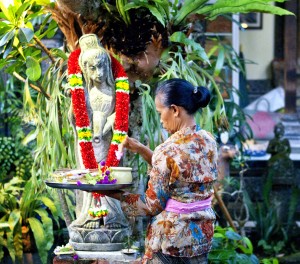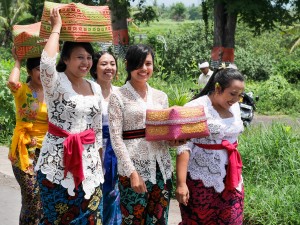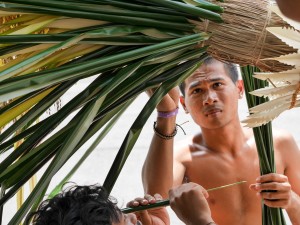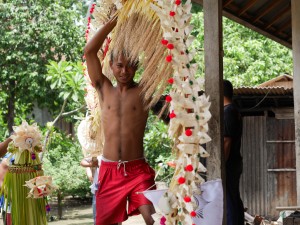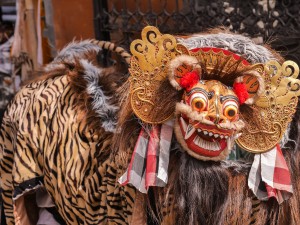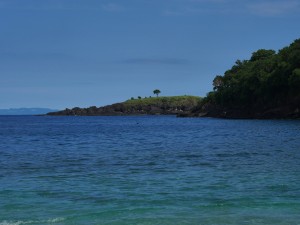Know-how
Life in Bali
Located between Java and Lombok, Bali is one of the 16.000 islands of Indonesia.
With around 85% of the population being Hindu, Bali is known as the Hindu island of the Indonesian Republic. It’s known as being “The island of the Gods”, for its cultural richness and exquisite natural sites.
People come here to surf, climb its many mountains and volcanoes, enjoy the peace and quiet, cultural dances and the island’s many delicious fruits and foods.
We appreciate how volunteers come to enjoy one of the world’s most favorite holiday destinations, while giving back to the island as well, because as we have explained in “What we do” this Paradise Island also has its less fortunate side.
Bali Culture:
In Bali people live with their (extended) families in 1 compound. Brother/brother-in-law, sister/sister-in-law, mother & father, uncle & aunt all reside in the same complex. Within the compound you will find the family temple, a communal area, several ‘bungalows’/ rooms which are for sleeping only (Balinese live mostly outdoors), several kitchen blocks (each ‘small’ family has their own), vegetable gardens and livestock (such as chickens and cows- depending on the location and the wealth of the family). Most have several coconut trees and at least one coffee tree. Ever heard of Bali coffee? Don’t leave Bali, without trying it at least once!
Bali’s culture is based on a form of Hinduism called “Hindu Darma” which is believed to have arrived on the island during the 11th century. This religion plays a heavy part in the family customs and community lifestyle but is a world away from that of India’s Hindus. Its influence expands extensively into the arts, which gives Bali its individuality from the rest of Indonesia. The Balinese have managed to preserve their culture despite the ever increasing number of tourists to the island.
Offerings and ceremonies:
When in Bali you will very often notice little packages of flowers and candy and cookies placed on the ground with incense on top of it. It is one of the many ways in which the Balinese honour the things that are between heaven and earth. They believe that the Gods and the demons should be pleased by giving daily offerings and regular ceremonies. The life of a Balinese is marked in stages by ritual ceremonies known as Manusa Yadnya. The first ceremony of Balinese life takes place even before birth. Another ceremony takes place soon after birth, during which the afterbirth is buried with appropriate offerings. The first major ceremony takes place halfway through the baby’s first Balinese year of 210 days. After that there is the famous ‘tooth veiling ceremony’, which marks the transition into adulthood. Another big ceremony is the wedding ceremony, it is a truly remarkable day to witness, with lots of food and very colourful outfits.
The end of a Balinese life is marked by a cremation. A Balinese cremation can be an amazing, spectacular, colorful, noisy and exciting event. In fact it often takes so long to organise a cremation that years have passed since the death. During that time the body is temporarily buried while an auspicious day is chosen for the cremation. Since a big cremation can be very expensive, less wealthy people may take the opportunity of joining in at a larger cremation, sending their own dead on their way at the same time.
Because we value and respect the Balinese culture and its traditions deeply, we ask all our volunteers to behave in appropriate manners. That is why we send out our VP Bali Volunteer Prep-kit before arrival and spend a great part of the VP Bali Orientation day discussing the do’s and dont’s and take time to sign our code of conduct (which will also be sent to our volunteers before arrival).
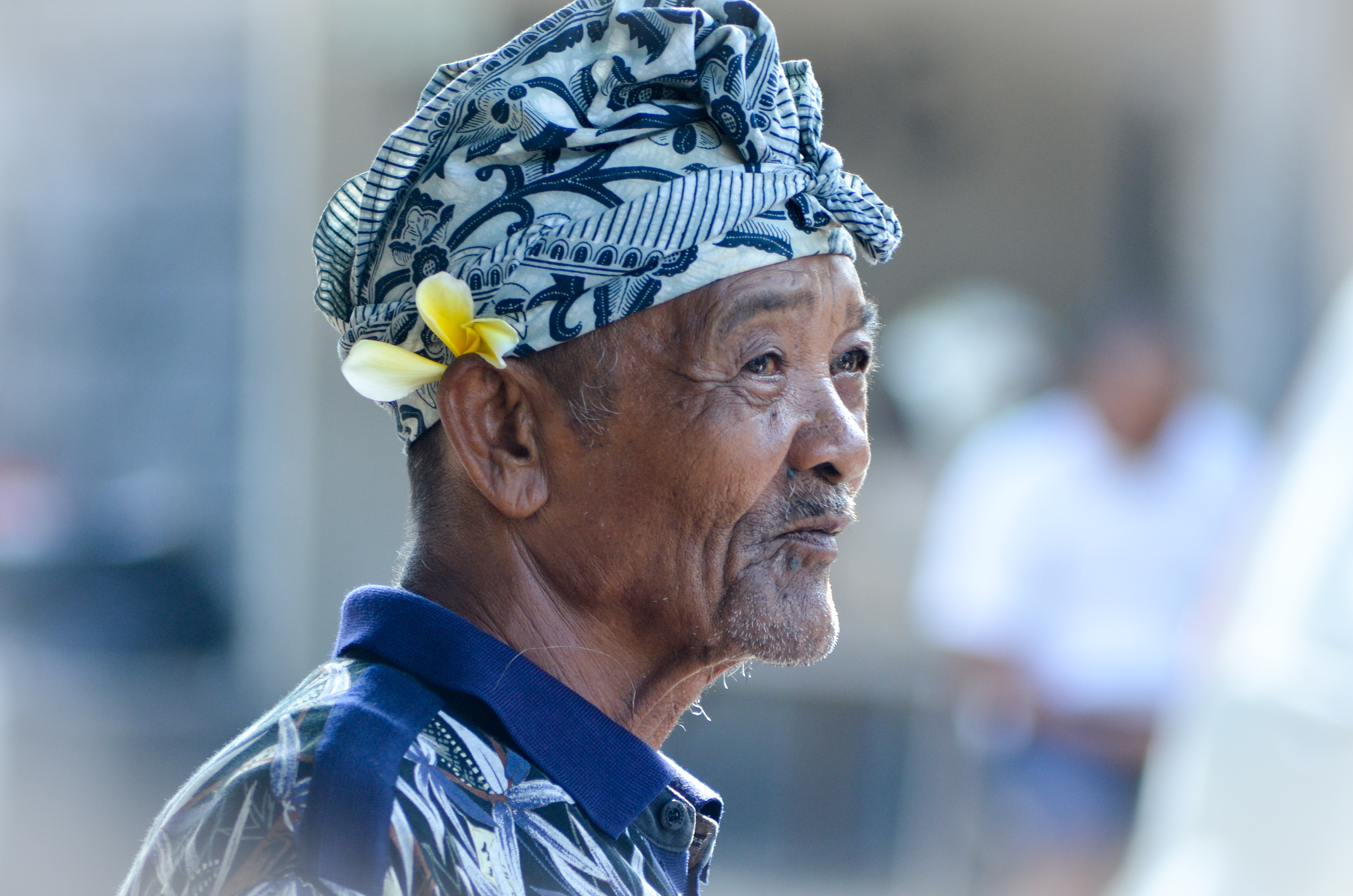
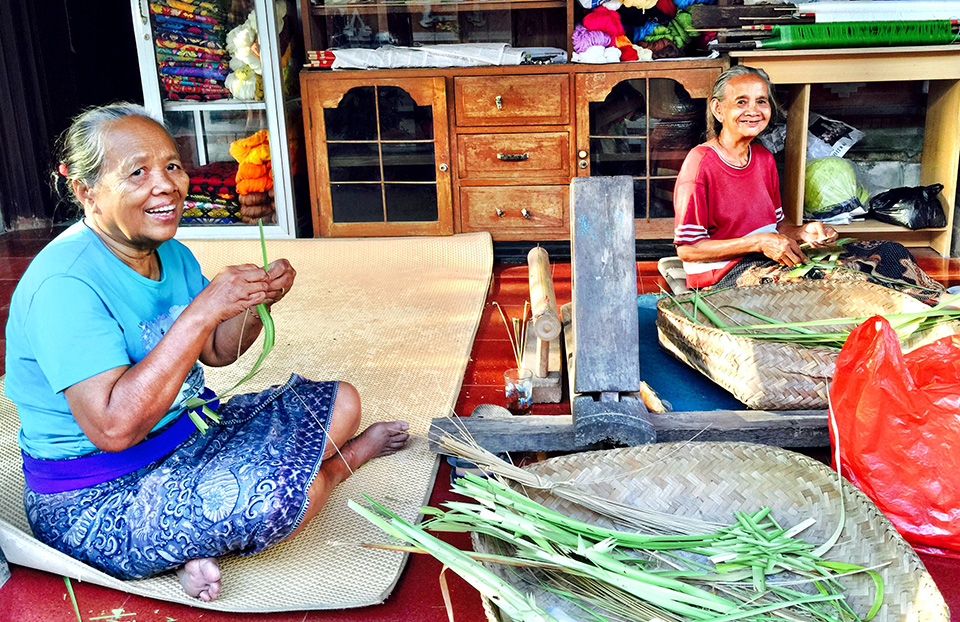

Read our blogs for more travel and cultural insight.
Climate
Since Bali is only a few degrees South of the Equator, it has a tropical climate and the sun rises around 6am and sets at 6 pm, every day of the year. This means that the temperature variation is very small, it’s always around 26- 30 degrees Celsius, and the island doesn’t have 4 seasons. Bali only has a “wet season” (usually from September to February) and “ dry season” (February to August). During the peak of the wet season, it’s not uncommon to have 30 minute to 2 hour rain showers in the afternoon, with the rest of the day being dry with warm temperatures.
In Ubud and the other Programs it can cool down at night, so we always advise people to bring a sweater just in case. And because it’s so close to the Equator it’s easy to get a sunburn and to get dehydrated because of the heat. Make sure to pack sunscreen lotion and drink lots of water and/or yummy coconuts!
Before your arrival we send you the VP Bali Volunteer Prep-kit with all the information you need before coming to Bali (do’s and don’ts, what to pack, teaching tips and more tips on where to go).
Bali must-see tips
Bali is a beautiful island and guaranteed to make you have a lot of fun and enjoy amazing experiences. On your days off you will want to explore! Here are some of our past volunteers’ favorite places to go and visit:
- Be part of a local ceremony:
When in Bali, you shouldn’t leave the island without having joined at least one ceremony. Show respect by dressing appropriately in the traditional clothing, and let it all happen. You will probably not understand most of it, but that’s okay, it’s a very impressive atmosphere and probably unlike anything you have experienced before! - Climbing Mount Batur:
One of the most beautiful experiences you can have in Bali is climbing the Mount Batur at night so that you can watch the sunrise from the top. Discover that Bali’s nature can surprise you over and over again with its beauty and diversity. You won’t know where to look first! Towards the deep yellow sun which slowly appears behind the top of the mountains across? Or towards the clouds, seeming like cotton candy? Or to the deep canyon with its bizarre rocks and shadows? Whilst eating breakfast on the top of Mount Batur you can enjoy the amazing views and take nice pictures in the light of a new day. - Gili Islands:
The Gili Islands are 3 small, but widely loved, paradise islands. They are only two hours away from Bali by boat. Depending on what you are looking for (party or quiet beaches) you will want to choose one of the 3. You can also go island hopping and enjoy it all; crystal blue water, white beaches like in the “Pirates of the Caribbean” movie, no cars disrupting the relaxed atmosphere and from the nice restaurants along the beach you can enjoy the sunset. There you can jump from giant swings into the water or lie in the comfortable hammocks, enjoy evenings with good music, and take part in snorkel trips around the island where you will see shoals of fish, corals and sea turtles… In short, you will have a wonderful time on the Gilis! - Trip to the North:
If you have some time to spare, how about making a road trip up to Northern part of Bali. Make your way up North and discover the island’s non-tourist side. The streets are lined with temples, waterfalls, lakes, as well as impressive mountains. You may even see monkeys sit on the side of the road! Driving through the little villages in the mountains and through the rainforest you will see many surprising things and the daily life of the Balinese. Once you have arrived you can go dolphin watching in Lovina (early morning: 6 am!) or spend your day discovering Bali’s nice underwater world on a snorkel trip. Or just relax in the hot springs or in one of the restaurants along the beach, while watching the sunrise or sunset over the beautiful black volcano beach and the blue ocean. - The rice terraces of Tegallalang:
If you are joining in the Ubud program, this is an activity you can do on one of your mornings during your stay. Only a short 10-15 minute drive away you will find the amazing rice fields of Tegallalang. Of course rice fields are very common in Bali, but there is a real feel to this one. Looking like a picture on a postcard, these deep green rice fields and palm trees will astonish you. Enjoy the scenery while drinking a cold fruit smoothie in one of the cafés along the rice fields. - Beaches:
Bali has some amazing beaches! Some of them are great for taking a sunbath, others are best for surfing or diving/ snorkelling. Below we list just a couple of our favorite beaches:Padangbai:
Padangbai is the main gateway for people who want to go to Lombok or the Gili Islands. The public ferry and the fast boats both have their terminals here here. However, there are some nice white sand beaches around the area, for example Blue Lagoon Beach which is a small bay, perfect for snorkeling, sunbathing or a nice lunch. Pantai Kecil is another very nice beach, where you will not find more people than palm trees. Padang Bai is only a beautiful 40 minute bike ride away from Program in the Valley.Canggu:
Canggu is a famous place for surfing but also offers great opportunities for sunbathing as this beach also stays quite empty during high season. It is also a good place to enjoy some nightlife outside of the crazy Kuta area, famous places are ‘The old man’s’ and ‘Deus’.Uluwatu:
Uluwatu is not actually a place where you go for swimming or sunbathing but rather to enjoy the stunning view along the coastal rocks and watch some of the best surfers in the world, riding some of the best waves our oceans can offer. There are several restaurants built in the rocks and you will be able to spend quite a long time sitting there and taking in the view. It is also possible to take a swim there during low tide.
There is so much more to explore on this divers island, so make sure to check out other sources as well (such as Lonely Planet, TripAdvisor etc)!


